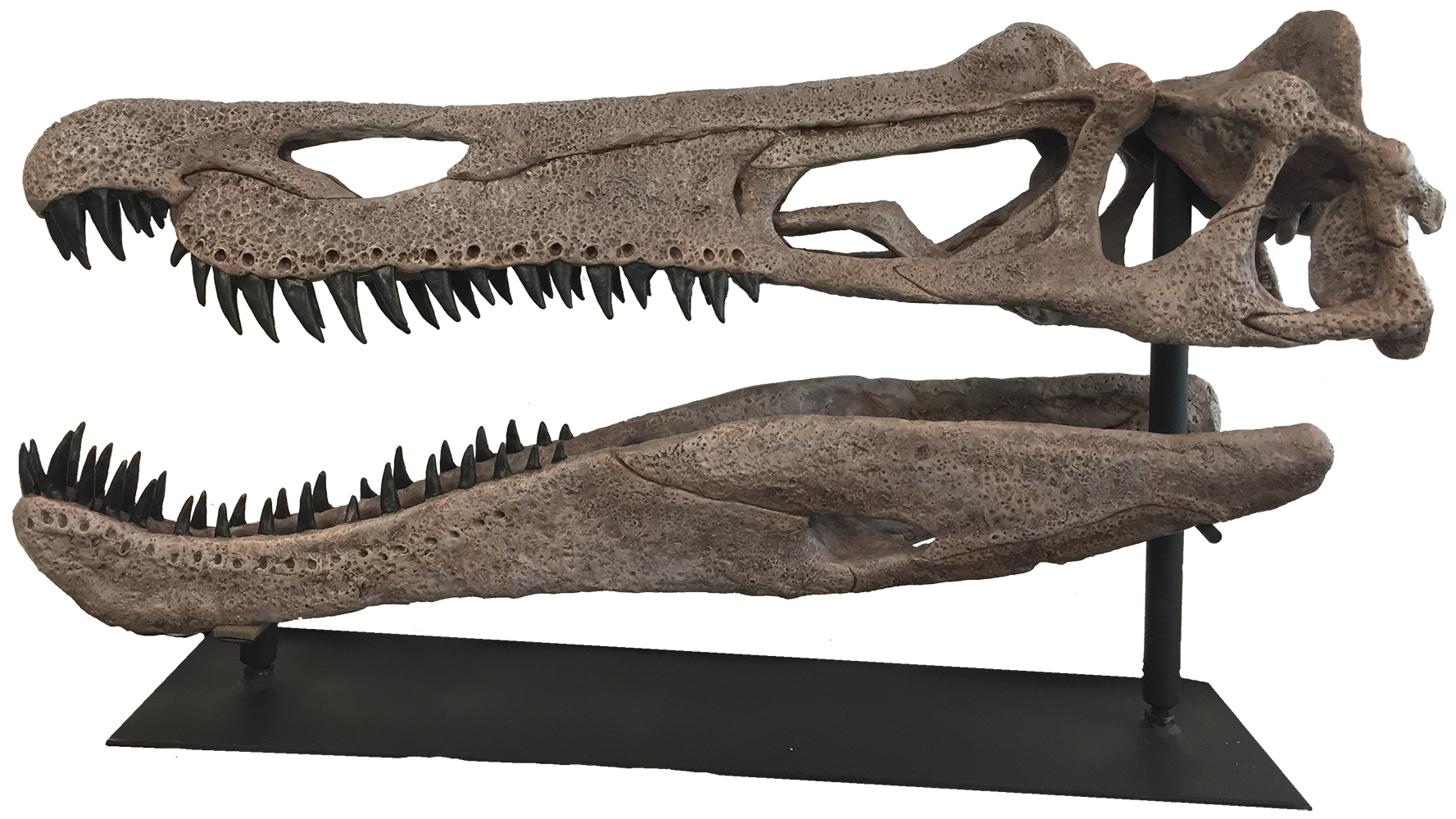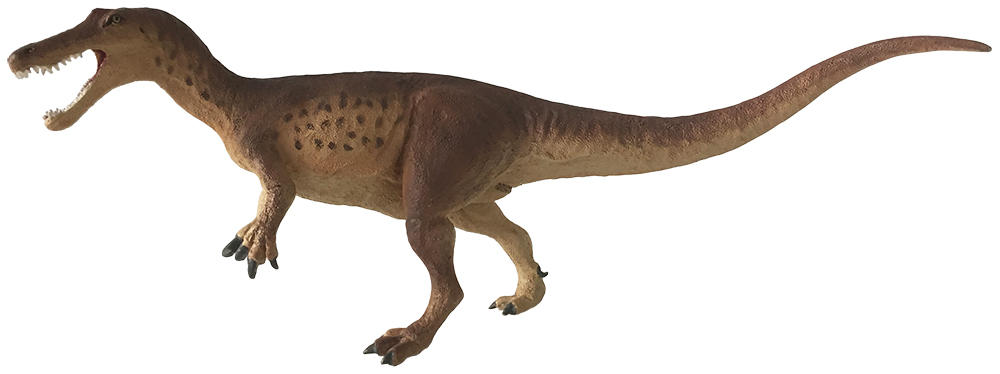Early Cretaceous (~130-125 MYA) - theropod dinosaur

Baryonyx was first known from a large claw found in a brick pit in Surrey, southwest of London in 1983 that was 30 cm long. Appropriately, its genus name comes from the Greek words for ‘heavy’ and ‘claw’. In life, the claw would have been even longer due to its exterior keratin layer. Museum staff excavated the pit, finding a relatively complete skeleton of a large predatory theropod from the Early Cretaceous.
Despite being a predator, it was clear from the beginning that Baryonyx was atypical compared to the large theropods then known. Its nostrils were set back further from the snout’s end than in other large theropods. More importantly, its jaws were long, thin, and filled with conical teeth distinct from the more blade-like teeth of most theropods. By comparison, the jaws and teeth were far more similar to those of fish-eating gharial crocodiles in modern India. Like gharials, its jaws also ended in a bulged out, rounded rosette snout. Just below this rounded snout, the upper jaw has a notch matched by an upward curve in the lower jaw. Its conical teeth were finely serrated, and the largest teeth lay in the region of the jaws’ notch and curve. Nile crocodiles that hunt large prey have broad snouts that generate powerful bites, but those broader jaws cannot move quickly through water because of water’s viscosity. Gharials that primarily hunt fish have thin jaws similar to those of Baryonyx. The narrow shape would help Baryonyx to quickly snap its jaws through water to catch fish, while their jaws’ curve and long teeth would help hold slippery prey. All these features suggest a piscivore (fish-eating) diet. However, in the abdominal region of the original find, they not only found fish scales, but also bones from an iguanodon dinosaur, suggesting Baryonyx was not averse to eating non-fish prey. The skull has a small crest just above and in front of the eye orbits that might have been a display feature.
Baryonyx was a spinosaur theropod. The first spinosaur discovered was the group’s eponymous member Spinosaurus. Discovered by Ernst Stomer in 1915, Spinosaurus was one of the largest known theropods. However, the original specimens were destroyed by Allied bombing of Munich during World War II. Hence Baryonyx provided a rebirth of our spinosaur knowledge. Although both were related forms that shared a similar piscivore diet, Baryonyx and Spinosaurus had a few significant differences. Spinosaurus appears to have been highly adapted for an aquatic swimming lifestyle, but Baryonyx is thought to have spent most of its life on the land, with a lifestyle more like a fish-eating grizzly bear than a fish-eating gharial despite their skulls’ similarities to those of gharials.
Baryonyx skulls are only known from partial remains, so the display is a scientific reconstruction rather than a cast of a largely intact fossil skull.
